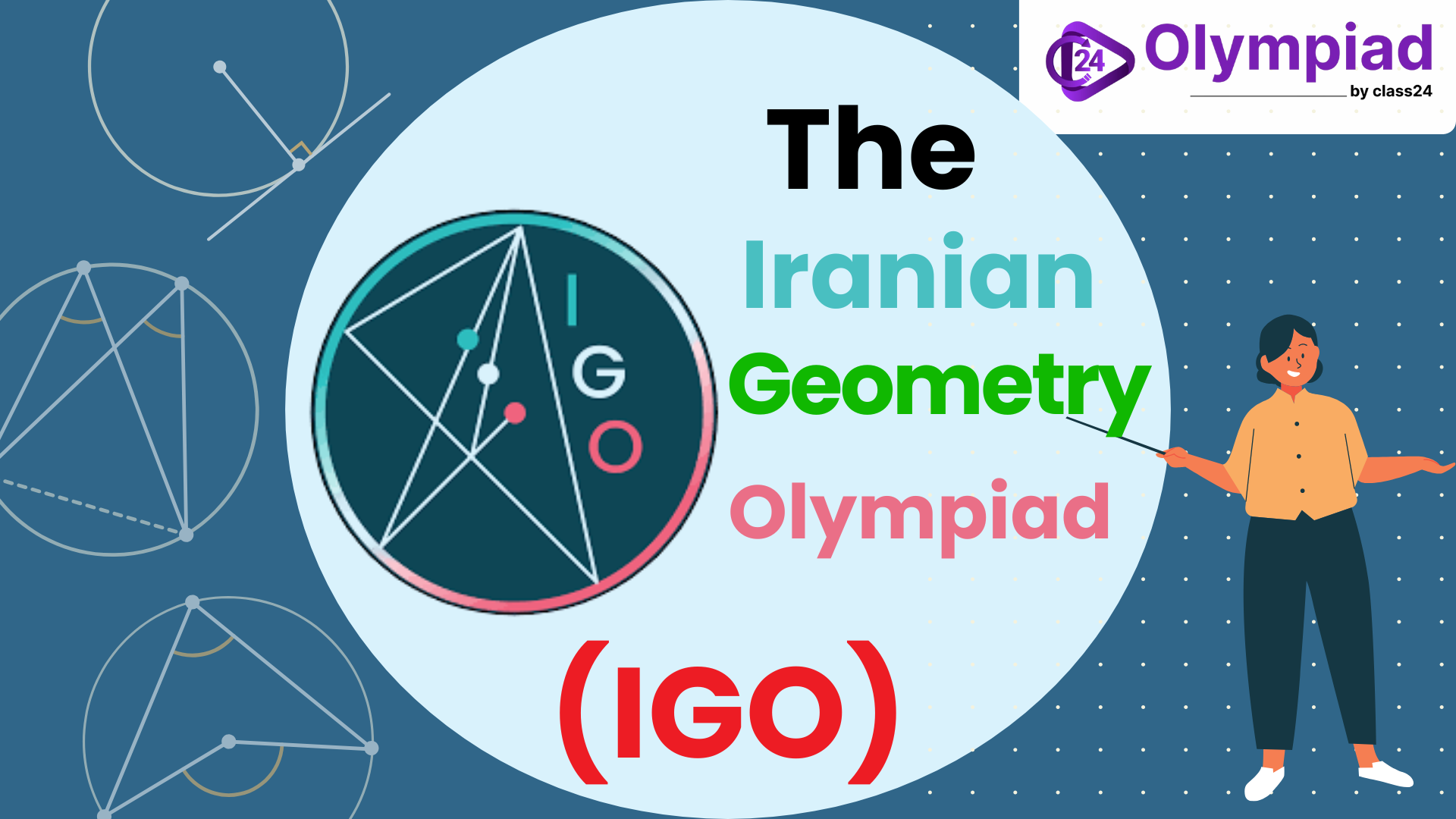
The Iranian Geometry Olympiad (IGO) is seen by most mathematicians as one of the most valued competitions out there. While other Olympiads look at various parts of mathematics, the IGO only deals with geometry. Every year, the IGO is organized by the Mathematics Teachers' Association (India) (MTA(I)) and draws geometry enthusiasts from different countries. Students have a chance on the platform to test their skills, sharpen their minds and be recognized for their talent in math.
High school students who like geometry and solving problems can use the Iranian Geometry Olympiad to exhibit their talent internationally. In the upcoming blog, we will share valuable information on what the IGO is, its history, who can participate, how competitions are arranged, how to prepare and the perks of being involved. If you are preparing for a medal in geometry or simply want to learn more, this blog will show you all you need to understand the IGO.
The Iranian Geometry Olympiad happens each year to recognize the country’s best talent in geometry. The purpose of this test is to assess how high school students deal with geometry topics and problems. Unlike other math Olympiads, the IGO is mostly about geometry and includes exercises on angles, shapes, construction problems and proofs.
IGO participants are challenged by unique geometric questions that push them to be creative. Taking part in the IGO means students answer Non-routine Maths questions and also use logical reasoning, critical thinking and creativity to solve detailed geometric challenges.
Since 2007, the Iranian Geometry Olympiad has worked to inspire high school students to take a greater interest in geometry. The goal is to let students experience geometric thinking and use what they have learned to address geometric issues they might face in everyday life.
The IGO matters a lot to the mathematics Olympiad community because it gives students a chance to concentrate on a particular field of math. The IGO has greatly improved many students’ knowledge of geometry since it is an essential part of mathematics and it plays a big role in topics such as engineering, architecture, physics and computer science.
Whether you are a student in Grades 7 to 12 or just love geometry, you can take part in the Iranian Geometry Olympiad (IGO). Following is a full explanation of the conditions for joining the IGO.
There are four different levels in the IGO, each created for different students based on age and grade.
Elementary Level: For students in Grades 7 and 8.
Intermediate Level: For students in Grades 9 and 10.
Advanced Level: For students in Grades 11 and 12.
Free Level: For anyone who is not officially part of a grade such as people who have graduated or have no formal restriction on their age or schooling.
Students in the Elementary, Intermediate, and Advanced levels must be under 20 years old on the day of the contest.
You cannot be enrolled at a university or other post-secondary place to qualify. So, the contest is fair for students in high school, even as university students can compete at a higher level.
A passion for geometry is all you need at the Free Level because there are no age or learning requirements to join.
The IGO allows individual participation. Consequently, students from different countries, both those on national teams and others, can all take part in the Olympiad. They sit for the same test as the formal participants at the same time and their scores are kept separate from the national rankings. This allows anyone to take part in the IGO, no matter what country they come from or if they are on an official team.
The IGO is powered by the Mathematics Teachers' Association (India) (MTA(I)) which handles the event’s organization and makes sure that everything goes smoothly.
For the respective Non-routine Maths Olympiad to be effective and meet its high standards, the conducting body organizes two main meetings every year.
Pre-Competition Meeting:
Post-Competition Review Meeting:
The MTA(I) sends out official messages for the Iranian Geometry Olympiad. This includes publishing.
Exam schedules and important dates
Registration guidelines
Exam centers and instructions
Answer keys and result announcements
Regular information is sent to schools, students and Olympiad members to ensure everyone is kept in the loop.
This is not the case for the IGO which does not create an official syllabus, unlike many academic events. For this reason, the Olympiad introduces different questions in geometry, inspiring students to learn and solve problems that go beyond what’s included in their school course.
Participants are encouraged to focus on:
Euclidean geometry fundamentals
Geometric constructions and proofs
Advanced geometric concepts such as projective geometry and transformations
Enrolling students in the IGO involves homework that includes previous years’ exams, strong involvement with geometry and building up reasoning skills; any curriculum has to be created by the teachers themselves.
Being well prepared for the Iranian Geometry Olympiad means practicing and studying regularly. There are a few ways that will improve your chances of succeeding:
1. Master the Basics of Geometry
You should make sure you know Euclidean geometry basics before starting with the more challenging topics. Take time to really study circles, triangles, angles and quadrilaterals.
You should spend some time learning how to construct and present the steps of a formal geometric proof to succeed in solving IGO problems.
2. Practice Problem Solving
To solve the problems in the IGO, one needs to think logically and be creative. Try solving a wide variety of problems in geometry texts and materials.
Try working through past Non-routine Maths questions to prepare for the types of questions you may receive in the competition.
3. Use Online Resources
Visit Olympiad by Class24 to get access to geometry Non-routine Maths Olympiad preparation courses. In these courses, you will find video lessons, practice problems and live classes that will help you get a good grasp of geometry.
Sit for mock tests and time your answers to improve how fast and accurately you solve problems.
4. Work on Geometric Proofs
To do well in the IGO, students must be able to show geometric proofs. Always describe how you got to your answer using organized and understandable logic.
5. Join a Study Group
Work together in a group with your fellow students to learn, share and discuss different geometry problems. Working together often results in the discovery of new approaches and resolutions.
Taking part in the Iranian Geometry Olympiad (IGO) comes with many advantages.
Enhance Your Geometry Skills: Working in the IGO can help you develop better problem-solving skills and get a stronger grasp of geometry.
Gain Recognition: Medals and certificates are awarded to the top scorers which can help your academic resume.
Prepare for Future Competitions: IGO helps prepare students for higher-level math contests like the International Mathematical Olympiad (IMO) and similar events.
Boost College Applications: Achieving success with the IGO can help your college application get noticed, especially if you are applying to STEM programs.
The Iranian Geometry Olympiad allows very talented high school students interested in geometry to compete. If you study, stay dedicated and make use of Olympiad by Class24, you will be able to succeed in this competition with your geometry knowledge. If you want to earn a gold medal or just want to explore more geometry, being part of IGO can help you a lot. I wish you success during your preparation and during the Iranian Geometry Olympiad.
Download the official International Geography Olympiad (IGO) Past Year Papers for all levels — Elementary, Intermediate, Medium, and Advanced. Practice these PYQs to enhance your geographical knowledge and prepare effectively for the upcoming IGO exams.
| Year | Download PDF |
|---|---|
| 2015 | Download PDF |
| 2016 | Download PDF |
| 2017 | Download PDF |
| 2018 | Download PDF |
| Year | Download PDF |
|---|---|
| 2017 | Download PDF |
| 2018 | Download PDF |
| Year | Download PDF |
|---|---|
| 2015 | Download PDF |
| 2016 | Download PDF |
| Year | Download PDF |
|---|---|
| 2015 | Download PDF |
| 2016 | Download PDF |
| 2017 | Download PDF |
| 2018 | Download PDF |
Note: These IGO question papers are provided for educational reference only. Use them for practice and revision to strengthen your conceptual and geographical understanding.




Leave a Comment